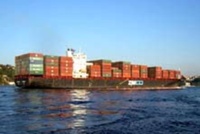ADB sees India growing faster than China at 7.8% in 2016-17
24 Mar 2015
The Asian Development Bank (ADB) has projected India's GDP to grow at 7.8 per cent in 2015-16, surpassing China's growth, and move up to 8.2 per cent in 2016-17 on the back of an investment push and rising investor and consumer confidence in the country.
 In its annual report, the Asian Development Outlook (ADO), ADB attributed the expected improvement in India's growth and investor confidence to structural reforms being undertaken by the government.
In its annual report, the Asian Development Outlook (ADO), ADB attributed the expected improvement in India's growth and investor confidence to structural reforms being undertaken by the government.
ADB expects India's growth to improve from 7.4 per cent in the current fiscal to 7.8 per cent in 2015-16 and further to 8.2 per cent in 2016-17.
Against this, ADB projected China's economic growth to decelerate from 7.4 per cent in the current fiscal to 7.2 per cent next fiscal and 7 per cent in 2016-17.
"India is expected to grow faster than the People's Republic of China in the next few years. The government's pro-investment attitude, improvements in the fiscal and current account deficits, and some forward movement on resolving structural bottlenecks have helped improve the business climate and make India attractive again to both domestic and foreign investors," ADB Chief Economist Shang-Jin Wei said.
Growth slowed in the China in 2014 on weak fixed asset investment, particularly in real estate. As the government proceeds with its structural reform agenda, further slowing of investment is expected to diminish growth to 7.2 per cent in 2015 and 7.0 per cent in 2016.
This is a much more moderate rate than the average growth of 8.5 per cent in the period since the global financial crisis, the ADB report said.
India is forecast to overtake China in terms of growth as the initial phase of government efforts to remove structural bottlenecks is lifting investor confidence. With the support of stronger external demand, India is set to expand by 7.8 per cent in FY2015 (ending 31 March 2016), a sharp rise from 7.4 per cent growth in FY2014.
This momentum is expected to build to 8.2 per cent growth in FY2016, aided by expected easing of monetary policy and a pickup in capital expenditure, it added.
Wei, however, cautioned that although the economic prospects look promising, "there are still many challenges".
ADB's estimate is, however, lower than the 8-8.5 per cent growth estimate of the Indian government for the 2015-16 fiscal beginning April but is higher than the 7.5 per cent growth projected by the International Monetary Fund (IMF).
''Developing Asia is making a strong contribution to global economic growth,'' said Wei. ''Falling commodity prices are creating space for policy makers across the region to cut costly fuel subsidies or initiate other structural reforms. This is a key opportunity to build frameworks that will support more inclusive and sustainable growth in the longer term.''
From the trough of the global financial crisis in 2009, developing Asia has contributed 2.3 percentage points to global GDP growth - nearly 60 per cent of the world's annual 4.0 per cent pace.
Eight economies in the region posted growth exceeding 7.0 per cent in nearly every year of the post-crisis period, including the People's Republic of China (PRC), the Lao People's Democratic Republic, and Sri Lanka.
Growth in the United States (US), where recovery seems to have turned a corner, is leading major industrial economies.
While signs are mixed in the euro area and Japan, soft oil prices and accommodative monetary policy will support growth. As a group, these economies are forecast to expand by 2.2 per cent in 2015, up 0.6 percentage points from 2014, and 2.4 per cent in 2016.
With improving external demand for the region's outputs, an expected pickup in India and in most members of the Association of Southeast Asian Nations (ASEAN), could help balance gradual deceleration in the PRC, the region's largest economy, the report said.
Risks to the outlook include possible missteps in China as it adjusts to its new normal, less decisive action on reforms in India than anticipated, potential spillover effects on the global economy of the Greek debt crisis and the deepening recession in the Russian Federation.
The impending rise in US interest rates may reverse capital flows to the region, requiring monetary responses to maintain stability. The benefits flowing from the low price of oil could evaporate if geopolitical tensions push it sharply higher.







.webp)














